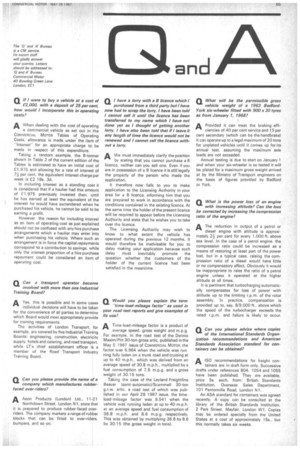a Would you please explain the term "time-load-mileage factor" as used
Page 67

If you've noticed an error in this article please click here to report it so we can fix it.
in your road test reports and give examples of its use?
ATime-load-mileage factor is a product of average speed, gross weight and m.p.g. For example, in the road test of the Dennis Maxim/Pitt 30-ton-gross artic, published in the May 5 1967 issue of COMMERCIAL MOTOR, the factor was 6,964 when the vehicle was running fully laden on a trunk road and cruising at up to 40 m.p.h.. which was derived from an average speed of 30.8 m.p.h., multiplied by a fuel consumption of 7.5 m.p.g. and a gross weight of 30.15 tons.
Taking the case of the Leyland Freightline Beaver (semi-automatic)/Scammell 30-ton g.t.w. artic, a road test of which was published in our April 28 1967 issue, the timeload-mileage factor was 9,541 when the vehicle was running laden at up to 40 m.p.h. at an average speed and fuel consumption of 36.8 m.p.h. and 8.6 m.p.g. respectively. This was obtained by multiplying 36.8 by 8.6 by 30.15 (the gross weight in tons).












































































































